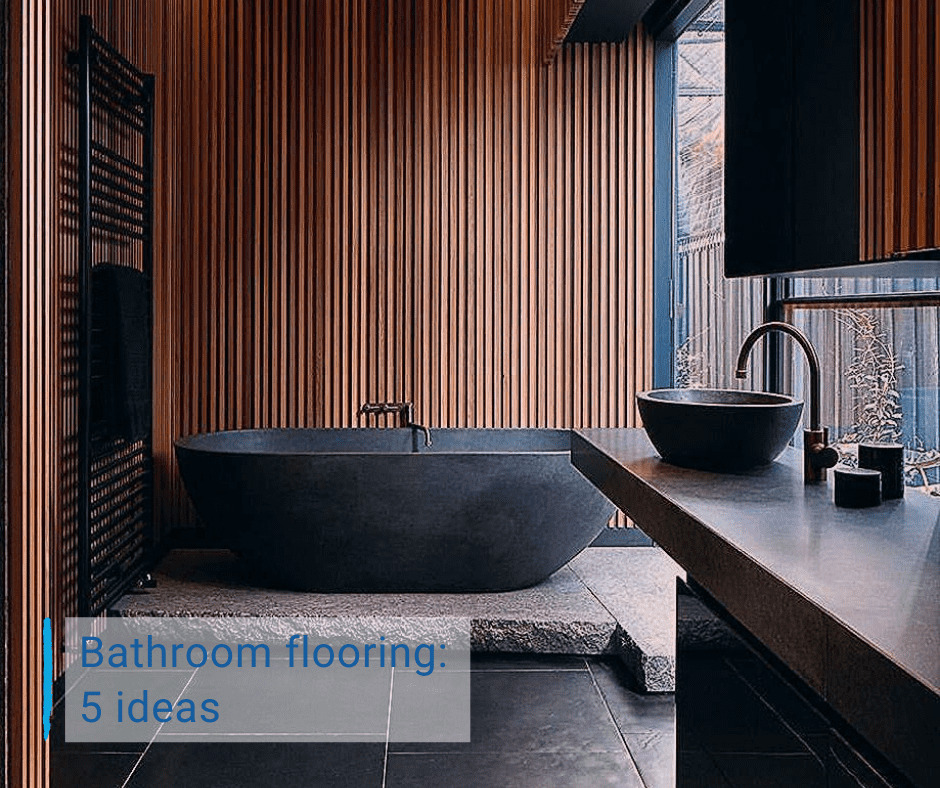While most of the homeowners will tend to choose tiles for their bathroom flooring, the choice is more vast than that. So many floorings are available, going from the most classic ones to the most extravagant, I will describe all of them to you in this article.
BATHROOM FLOORING 1: TILS
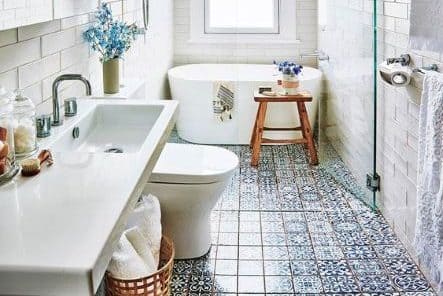
Tiling is the most common flooring used in the bathroom due to all of its advantages. It is easy to clean and install, all of this for an accessible price. Also, its offers a wide range of different colours and motifs. Therefore, it is really easy to create your unique flooring. Moreover, today, some brands offer tiles with coloured grout and even tiles without grout.
Advantages
- high waterproofness and resistance to impacts
- huge choice of different colours and motifs offering limitless possibilities of designs
- suitable for any budgets, from £10 to £80 per m²
- easy to renovate
Disadvantages
- can become slippery
- does not absorb impacts
- makes the sound resonate
BATHROOM FLOORING 2: NATURAL STONES

Natural stones were used for ages as floorings. They were then slowly replaced by ceramic tiles as less expensive and more resistant. However, for an elegant interior with unrivalled beauty, natural stone is still an obvious choice. The available shades are vaster than what we might think as different stones offer different styles.
Advantages
- great durability
- great aesthetic
- easy to clean with soapy water
Disadvantages
- Expensive (from £30 to £200 per m²)
- it needs to be put on a strong floor that can bear its weight
- the help of a specialist is required for the installation
- if porous stones such as limestone are chosen, it needs a waterproof coating applied every 2 years
BATHROOM FLOORING 3: WAXED CONCRETE
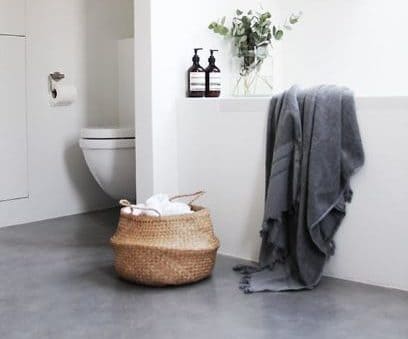
It becomes more and more spread in houses as it gives a natural or industrial style to the bathroom. It can be used in many ways: for flooring, wall cladding, or basins.
Concrete is a real plus, considering the range of colours it offers. Also, as many natural stones, it gets smoother with time. Moreover, if the waterproof coating is well applied, it can last for many decades.
Advantages
- offers strong resistance and hygiene
- no grout
- easy to maintain
- many textures and colours are available
Disadvantages
- price around £100 per m²
- the installation needs the help of a professional
- specific waterproof coating needed
BATHROOM FLOORING 4: WOODEN FLOORING
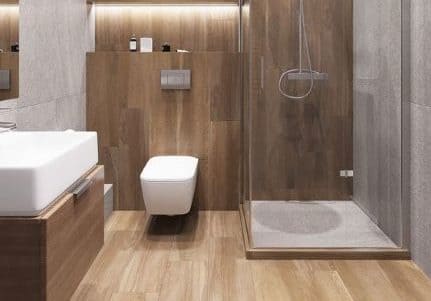
Wood and damp rooms are oxymorons. Nevertheless, some trees stand a high rate of humidity as they thrive in tropical forests. Why would it be a problem in the bathroom then? Hence, most of the wooden floors are made from exotic woods that feature a natural waterproofness such as the merbau or teck. Having the same result with other types of wood is also feasible. They will however need to receive a specific treatment. If you are interested in wooden bathrooms, you can read our article on Wooden Bathrooms.
Advantages
- elegant aesthetic
- wood plays an insulator role
Disadvantages
- highly-priced, from £20 to £150 per m²
- fragile material
- tough to maintain
- bleaches with the sun
BATHROOM FLOORING 6: LAMINATE FLOORING

Laminate consists of a chipboard base on which is put decoration with wood, concrete or tiling motifs. Thus, it can imitate any texture. Here again, you need to make sure to choose one that features waterproofness. Plus, some of them even offer an antibacterial surface.
Advantages
- inexpensive price (£3 per m²)
- limitless choice of designs
- can be placed on any types of floor
Disadvantages
- cleaning with a lot of water is to be avoided
- makes the sound resonate
BATHROOM FLOORING 7: VINYL FLOOR
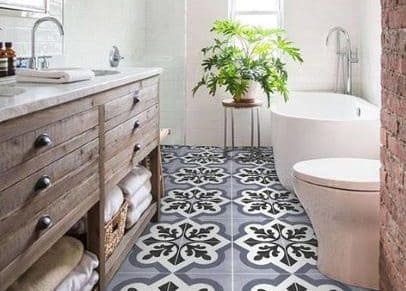
They are either in shape of squares that you assemble or in a rolls. For the bathroom, favour these with a non-slip surface.
Advantages
- attractive, £2 per m²
- wide range of colours and motifs
- easy to clean process but the use of corrosive products are not advised
- Very easy to install
Disadvantages
- not a solid material
- due to its thinness, you can see where the floor is not levelled
BATHROOM FLOORING 8: VEGETABLE-FIBRE
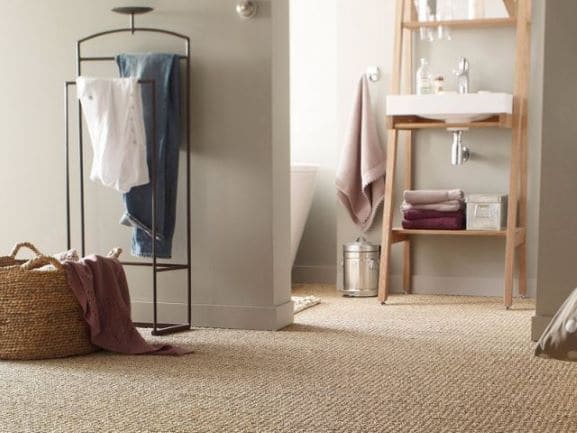
The success factor of this material comes to its originality and natural origin. Among the materials available, seagrass is most commonly used as it is already waterproof. Moreover, it appreciates being in a damp environment as it keeps its elasticity.
Advantages
- ecological
- natural
- waterproof
- the price stands between £5 and £10 per m²
Disadvantages
- tough to maintain
- only one colour available
- can be unpleasant to step on barefoot
BATHROOM FLOORING 9: WATERPROOF CARPET
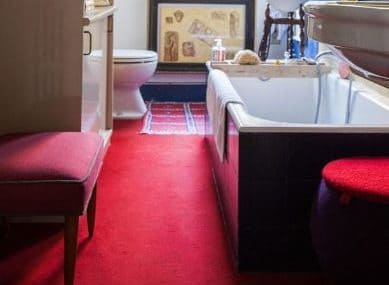
As surprising as it sounds, carpet floors exist for bathrooms. Their fibres are made to quickly dry, and the latex layer underneath prevents the water from going through. Nevertheless, do not forget to open the window to refresh the room.
Advantages
- Simple to put in place
- comfortable touch
- offers a wide range of colours
Disadvantages
- price between £10 and £30 per m²
- tedious to clean
- weak durability
As always, if you have further question about the topic, do not hesitate to leave a comment. I would be more than happy to answer.

